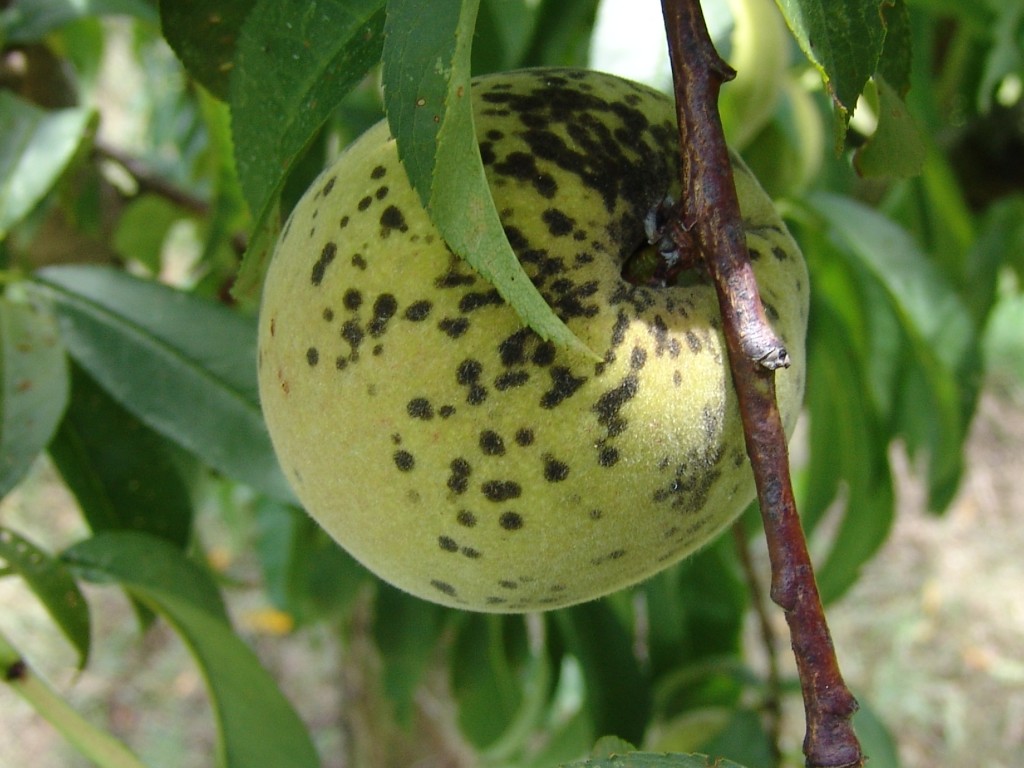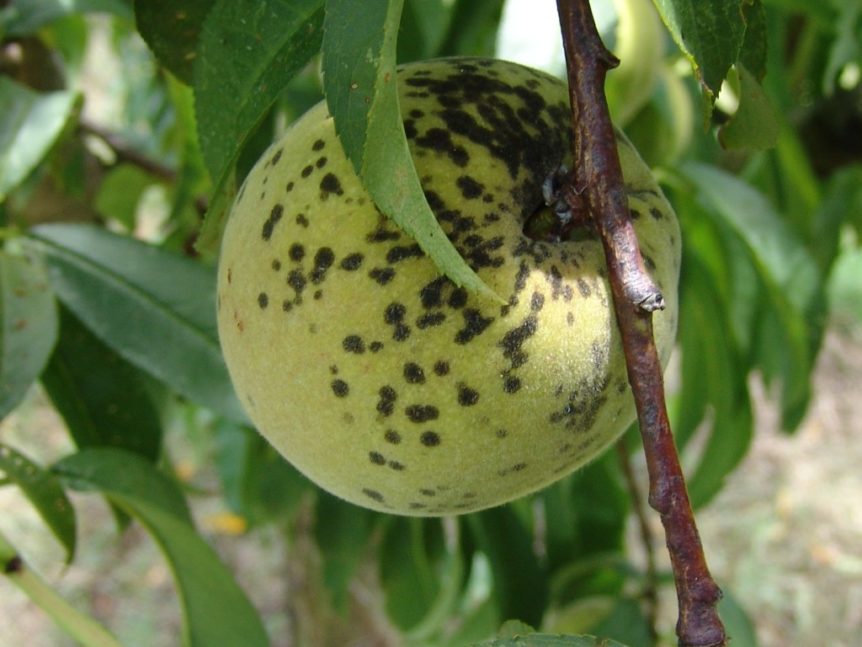By Clint Thompson
Early season fungicide spray programs are critical for peach producers wanting to navigate certain diseases this time of year.

Phil Brannen, University of Georgia (UGA) Cooperative Extension fruit disease specialist, talked about two diseases, in particular, that growers must be wary of.
“As we’re moving into the spring, early peach development is very prone to disease. Two of the diseases that are really bad on early peach development, and when I say early, I mean just after the shuck split on the peaches right after bloom; we have scab that can develop, and we can also have bacterial spot.”
Peach scab is a fungal disease that excels in a wet environment. It doesn’t affect the safety of the fruit, but if left untreated, it can degrade the crop’s aesthetic appeal.
Bacterial spot is a sporadic leaf-spot disease that can cause defoliation in certain cultivars. Spots can also appear on the fruit, causing damage and leaving fruit unmarketable.
“If you can control the disease early in the season on both of those, it goes a long way towards season-long control,” Brannen said.
Another disease growers must contend with is brown rot. Its severity will largely depend on how much rainfall the Southeast receives this spring.
“Also, we don’t generally worry about it that much, but during bloom we do have the blossom blight phase of brown rot, and that can set us up with a lot more inoculum if we have a lot of the flowers infected with the pathogen that causes brown rot,” Brannen said.
“With brown rot, we can have a lot of the blossom blight and if it’s dry during harvest, we still won’t have brown rot. We could have no blossom blight, and if it’s wet during harvest, we could have a lot of brown rot. It depends on the year for that disease.”
According to UGA Extension, brown rot will attack flowers, stems and fruit of the peach tree. The disease causes blossom browning and wilting when it affects flowers. Stem infections lead to small, brown, elongated lesions, also known as cankers. These stem cankers can produce spores for the disease to spread.










